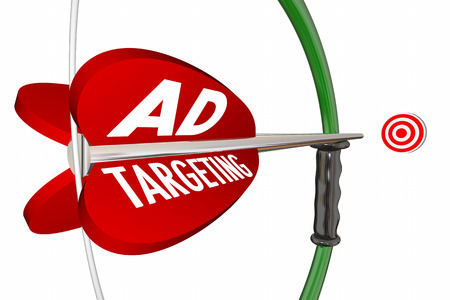Negative effects of ad targeting

Every business, regardless of what they sell or provide, has a target audience that they are trying to reach. Therefore, it makes sense for them to spend the bulk of their marketing budget going after that audience. This is why online ad targeting has become so popular. We can almost guarantee that you have seen this form of advertising in action before, especially if you spend any amount of time on social media. You see sponsored ads on your timeline, all of which are based on what you read, who you follow, and what you have expressed, explicitly or implicitly, an interest in. The ads try to be interesting and not invasive, as they are generally related to your interests. However, ad targeting does carry some negative factors as well.
Higher Ad Rate
Targeted ads are more expensive than non-targeted ads. One of the reasons is that it takes money to figure out who you are selling to, where these viewers might be located and separate them into different groups for ad serving purposes. All of that data collecting, processing and marketing analytics do not come cheaply. However, with all that money spent on ad targeting and ad serving, there may not be a whole lot left over for the publisher who actually provides the content that brings in the viewers.
Creepy Factor
Ask any average consumer what they hate most about the shopping experience and you will learn that getting followed around by a salesperson is something that puts them off. This is a little how it feels now with targeted ads, as it gives the viewers the feeling that their activities are being watched and monitored around the clock. It can be more than a little disconcerting as there are going to be people who just view these ads as downright creepy. When this happens, ad blocking is a common consequence. Therefore, it is important for the whole advertising industry to maintain a balance between targeting and intrusiveness.
Missing out on a Higher ROI Audience
It can become altogether too easy to turn away from a certain demographic, simply because the market research deems them to be less desirable. The problem here is that they may be a perfect fit for some of your products or services at the right price. What if the cost to reach these viewers is just really lower than the cost to reach your ideal target audience and at the same time, these viewers generate a higher conversion rate than your perceived target audience. Therefore, it is better to keep a big picture and not focus too deep into a particular segment without looking at alternatives. Also, don’t put all your ad budget targeting just a single group of viewers. Allocate some resources for testing and exploration.
Ad Measurability
When you make an agreement with a publisher to only show your ads to your specified target audience, you need to be sure that this is someone that you can trust. Measuring the number of people who saw the ad is easy enough, but ensuring that every one of those people were part of your target group is not quite so straightforward. It is actually very difficult and challenging because not all parties along the ad serving chain are willing to disclose all their data sources.
Ad Fraud
This very negative effect of ad targeting often goes hand in hand with the measurability aspect. Publishers charge a higher rate for targeted ads. Then, they turn around and use a bot or some other types of cheat to make it look as though your ads are getting seen by the target viewers, when in fact, they are not. For example, how do you know for sure that your ads were only displayed to female with high annual salary? Before you decide to spend more for targeted advertising, make sure that the ad tech companies you are partnering with are reliable, trustworthy and that you have your own
ad server to help you monitor your ads and viewers.
Related
 Every business, regardless of what they sell or provide, has a target audience that they are trying to reach. Therefore, it makes sense for them to spend the bulk of their marketing budget going after that audience. This is why online ad targeting has become so popular. We can almost guarantee that you have seen this form of advertising in action before, especially if you spend any amount of time on social media. You see sponsored ads on your timeline, all of which are based on what you read, who you follow, and what you have expressed, explicitly or implicitly, an interest in. The ads try to be interesting and not invasive, as they are generally related to your interests. However, ad targeting does carry some negative factors as well.
Every business, regardless of what they sell or provide, has a target audience that they are trying to reach. Therefore, it makes sense for them to spend the bulk of their marketing budget going after that audience. This is why online ad targeting has become so popular. We can almost guarantee that you have seen this form of advertising in action before, especially if you spend any amount of time on social media. You see sponsored ads on your timeline, all of which are based on what you read, who you follow, and what you have expressed, explicitly or implicitly, an interest in. The ads try to be interesting and not invasive, as they are generally related to your interests. However, ad targeting does carry some negative factors as well.